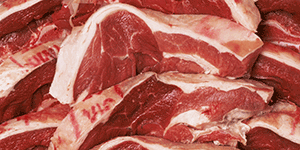Meat is high in protein and a valuable source of essential nutrients, making it a leading choice at meal time. However, there are concerns over handling and cooking meat because of its tender and raw nature, but cooking it kills the bacteria that can cause food poisoning.
Many different types of bacteria can grow on meat. It is therefore important to safely handle and store all types of meat. But people find it confusing that different types of meat are handled differently.
Purchasing meat
When purchasing meat, there are some do’s and don’ts that should be considered. Always buy your meat from a reputable butchery. If you are buying pre-packed meat, check the label for the expiry date.
Make sure raw meats are packed in bags separate from ‘ready to eat’ foods such as fruits and other groceries.
Go for the leanest option whenever you can. As a general rule, the more white stripes you can see on red meat, the more fats it contains.
It might be tempting to purchase meat at night or by the road side, since it is relatively less pricey but such meat may not be fresh, in fact, such meat is often stale.
Check to see that the colour is deep red and the meat is firm enough as this shows that the meat is fresh.
Safe storage of meat
Always handle meat with clean, dry hands – wash hands before and after handling.
Place products in a plastic bag to prevent juices from leaking onto other raw products in your shopping cart.
Note: If plastic bags are not available at your grocer’s meat counter, pick up a few extra bags in the produce section or consider bringing your own from home.
Empty perishable foods immediately and refrigerate them.
Place securely wrapped packages of raw meat in the meat drawer or coldest section of your refrigerator.
Check the temperature of your refrigerator with an appliance thermometer. It should be at 40F; the freezer at 0F.
Keep meat and poultry in its package until just before cooking.
If you are cooking a number of small pieces of meat, move them around and stir at regular intervals so that each piece cooks evenly, that is one way of killing germs that might be in the meat.
Preparing meat
Wash hands thoroughly for 20 seconds before, during and after handling raw meat,
Use two separate cutting boards to avoid cross-contamination-
Sanitise cutting boards often in a solution of 1 teaspoon chlorine bleach in 1 quart of water. Wash kitchen towels and cloths often in hot water in washing machine.
Use one for raw meats and the other for fruits and vegetables- Colour-coded cutting boards can help you remember which is which.
Defrost meats in the refrigerator or in the microwave by using the defrost setting.
Cook meat that has been defrosted in the microwave immediately.
How to know if your meat is thoroughly cooked
When you pierce the thickest part of the meat with a fork or skewer, the juice should run clear.
Cut the meat open with a clean knife to check it is piping hot all the way through – it should be steaming
Meat changes colour when it is cooked. Make sure there is no pink or red meat left, it should be light brown all through.
If you are cooking a very large dish, check it in a few place, because some parts of the dish may be less hot than others.












